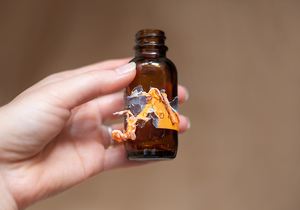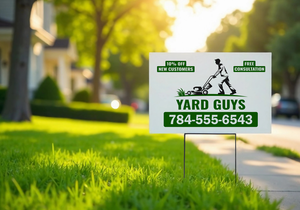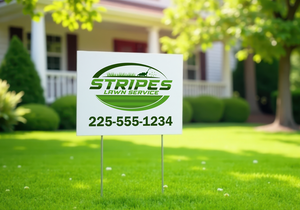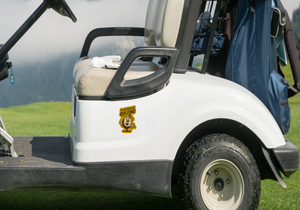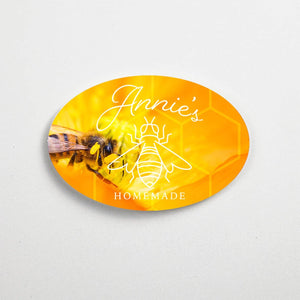Heat vs. Cold: Which Removes Sticker Residue Better?

Heat is the best option for removing sticker residue quickly and effectively, but in some cases, cold can help as well. Whether you’re trying to get sticker residue off plastic, glass, metal, or even your favorite sweatshirt, choosing between heat or cold really depends on the surface and how stubborn that sticky mess is.
Here’s how heat and cold compare when it comes to removing sticker residue, along with tips for the best results.
Heat Method: The Fastest Way to Remove Sticker Residue
How It Works
Applying heat softens the adhesive, making it easier to peel off. This method works well on glass, plastic, and metal surfaces where residue tends to cling.
Best Heat Sources to Use:
- Hair Dryer – Hold it a few inches away and heat the residue for 30–60 seconds before wiping it off.
- Heat Gun – Works like a hair dryer but at a higher temperature (ideal for stubborn adhesives).
- Warm Soapy Water – Great for surfaces that can’t handle direct heat, like fabric or wood.
Best for Removing Residue From:
- Glass (like windows or jars)
- Plastic (bottles, containers, electronics)
- Metal (stainless steel, aluminum cans)
Why Heat Works Well
- Quick and effective—softens the adhesive in seconds.
- Leaves less mess—residue wipes off easily.
- Safe for most surfaces—as long as heat is applied carefully.
Cold Method: The Slower, but Sometimes Necessary Option
How It Works
Cold hardens the adhesive, making it brittle so it can be scraped off more easily. While not as effective as heat, it can help with certain types of sticker residue.
Best Cold Sources to Use:
- Ice Pack – Apply directly to the residue for a few minutes before scraping it off.
- Freezer – Works well for smaller objects like bottles or plastic containers.
- Compressed Air (Air Duster) – Turns ultra-cold when sprayed upside down, freezing the adhesive instantly.
Best for Removing Residue From:
- Fabric (clothing, upholstery)
- Delicate Surfaces (wood, paper, painted items)
- Sticky Messes That Smear (like melted label adhesive)
Why Cold Sometimes Works
- Prevents smearing—hardens sticky adhesives so they chip off.
- Safer for delicate materials—won’t damage heat-sensitive surfaces.
- Good for fabric—helps lift sticker residue without spreading it.
Which Method Should You Use?
| Surface Type | Best Method |
|---|---|
| Glass & Plastic | Heat (hair dryer, heat gun, warm water) |
| Metal | Heat (hair dryer or heat gun) |
| Fabric & Upholstery | Cold (ice pack, freezer method) |
| Wood & Paper | Cold (gentle removal to avoid damage) |
| Painted Surfaces | Cold (to prevent peeling or warping) |
Heat vs. Cold for Sticker Residue Removal
Heat is the best method for removing sticker residue quickly, especially from glass, plastic, and metal. Cold is a secondary option that works best for fabric, wood, and delicate surfaces. Using the right method for your surface will save time and frustration.
Sick of battling stubborn sticker residue? The right stickers make all the difference. Our custom stickers are built to stick when you want them to—and peel off cleanly when you don’t.
FAQs About Removing Sticker Residue
What is the best way to remove sticker residue from glass?
Using heat is the fastest method. A hair dryer softens the adhesive, allowing it to be wiped away with a cloth or soapy water.
How do you get sticker residue off plastic without damaging it?
Use heat from a hair dryer to loosen the adhesive, then wipe with rubbing alcohol or soapy water. Avoid scrapers that can scratch the plastic.
What household items remove sticker residue?
Common items like rubbing alcohol, vinegar, baking soda, and cooking oil can help break down sticky residue. Heat or cold can also make removal easier.
Can you use ice to remove sticker residue?
Cold can help harden adhesives, making them easier to scrape off—especially on fabric, wood, or painted surfaces where heat might cause damage.
Does vinegar or rubbing alcohol work better for sticker residue?
Both are effective, but rubbing alcohol works faster because it evaporates quickly and breaks down adhesives without leaving moisture behind.
- Nashira Edmiston

